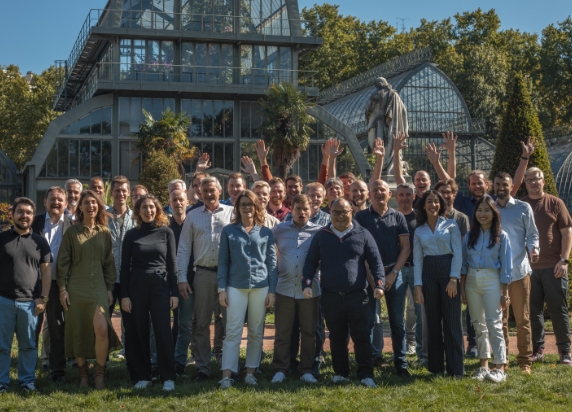Communication takes place on many levels, and in different places; i.e., from a coffee conversation with a colleague to official letters and administrative decisions. The implementation of these extreme forms of communication, especially the most formal, did not require the use of IT technology until recently. Currently, many official matters can be settled electronically. Interestingly, the dangers of the pandemic forced us to be physically isolated, and informal communication has also moved to the virtual world.
The role of Common Data Environment (CDE) (according to ISO 19650) is to provide access to information i.e., databases, 3D models, drawing documentation, etc. to ensure communication, on three different levels.
1. First level – Communication in the task team
The first level of communication that is implemented within the CDE is ongoing communication in the project team – usually in one industry, e.g. in an architectural, construction or installation office. In the ISO 19650 standards nomenclature, this is called a task team. In this case, the main processes will usually be implemented on one software platform (although this is not a rule). To be effective, communication requires appropriate dynamics and set messages in the context of the project. The ideal environment is a 3D model that allows the most accurate reading of the sender’s intentions. Modern design tools usually have the functionality to support this level of communication.
2. Second level – Coordination through collaboration
There is communication between multiple actors on the second level, which share a common goal of producing a high-quality result, e.g. a multi-sector project or a finished building. Such a wider group of project participants, (i.e., design offices, contractors of various types of construction works, etc.), usually operate under the leadership of the so-called main or general designer or contractor. They all perform modeling processes on information sets and therefore have their own native software environment.
Of course, the individual pieces of the puzzle must be coordinated with each other in terms of content and geometry. While in the case of construction, all inconsistencies must be resolved in order for the building to be built (they are often resolved on an ongoing basis during the implementation of works), Of course, the incompatibility of individual data sets, including models, is an undesirable phenomenon and should be eliminated. To achieve this goal, the work of individual task forces must be regularly confronted with each other, and any discrepancies must be resolved.
This level includes communication tools such as BCF (BIM Collaboration Format) to exchange information about a project, and integrations to allow participants to manage the project.
3. Third Level – Communication in the project team
The third level of communication is the project team, a set of all project participants participating in the information exchange. On one hand, communication will be carried out primarily between the contracting entity (appointing party) and individual lead appointed parties. On the other hand, another platform will be communication between entities cooperating within the contracting entity.
Unlike in the first and second levels, here many participants will not have their own native software environment implementing BIM (Building Information Modeling) processes. These will be the so-called technical persons – engineers, designers, consultants, and management staff and persons on behalf of the investor defining the requirements for the building under construction. This may be, for example, the staff of the planned hospital in the person of doctors and nurses. It is at this level that the online platform, sometimes simply called CDE, often appears. This wide group of participants certainly needs a cooperation platform where the substantive evaluation of the project can be made based on various sources of information: 3D models, drawings, technical documentation, specifications, and other documents.
In this case, what is needed is a tool that enables the free exchange of information between the contracting entity and the executive teams, and the involvement of a wide range of people in the process. The tool’s intuitiveness, simplicity, and reliability will come to the fore. This is decisive during the implementation in cases where the group of people involved in BIM processes goes beyond the hermetic world of specialists. The so-called human factor becomes the key, and the success of the implementation may be affected by the ability to overcome the reluctance to change and the new technologies of the project participants.
For example, the pilot projects implemented as part of cooperation consist of implementing BIM standards in a company in the power industry. The main goal of the pilot was to test the team’s ability to adapt to processes involving working with three-dimensional models. The power industry is still at an early stage of adaptation of BIM technology, and knowledge of the Building Information Modeling environment is not common in the industry. Nevertheless, thanks to the use of a properly selected platform, it was possible to engage all key project participants in working on the models and implement a number of processes including, among others, the substantive assessment of the project and quality control of the models, as well as conducting the accompanying communication in the BIM model environment.
Catenda Hub – Let’s collaborate
Catenda Hub (previously Bimsync) is used in all phases of the construction and investment process and is intended for a wide range of users (i.e., owners, general contractors, designers, project managers). Even project participants who do not have their own native Building Information Modeling (BIM) applications can participate. Catenda Hub (previously Bimsync) is primarily used for the substantive evaluation of the project and the exchange of comments between representatives of the contracting party, i.e. customers, and contractors – designers, general contractors, consultants, material suppliers, and others.
The platform is also used at the operational stage, to collect data in the earlier stages of the project, i.e., drawing documentation, documents, specifications, BIM models, etc. Catenda Hub (previously Bimsync) integrates many native environments such as Archicad, Revit, Navisworks, or Solibri, which ensures faster workflow between specialists using their own software environments.
The tool has a number of features tailored to the applications described above. It is easy to use and intuitive – it does not require long-term training, and access does not require installing any software – all you need is a web browser. It allows you to view all popular document formats and display any number of models in IFC 2×3 and 4 formats directly in the browser window (Industry Foundation Classes). The speed of its operation is noteworthy, even in the case of very large models. It has a comments module in the BCF 2.1 standard that allows you to create, import, and export comments divided into any number of tables and combine comments with other elements on the platform, such as documents and corrections attached to them.
the platform is always licensed for an unlimited number of project users, with no limit on the number of files, data space, and transfer size. Thanks to this, it is possible to predict the cost of the platform and include it in the price of the project.
Summary – Message’s function determines its form
Tools such as Archicad and Catenda Hub (previously Bimsync) exchange messages based on the open BCF standard. So one could ask: are these tools not duplicating?
Why different tools using the same technology are necessary and occupy an important place in the CDE is the email protocol? We use it by communicating with different people in different ways. Although the technology of the message itself is still the same, mass mailing used for marketing purposes created in a specialized tool is completely different than a single message created on a smartphone application.
As in modernist architecture “form follows function”, the function determines the form and meaning of the message, not the technology used. However, because the reality of projects is very complex, we organize communication by separating the areas in which we communicate in different groups of entities with whom we are in different relationships. The examples given above Archicad Teamwork and Catenda Hub (previously Bimsync), illustrate this best.
How to choose your Common Data Environment? Read the guide we wrote here and download the CDE framework for free on this link.
Jurek Rusin, Chairman at buildingSMART Poland, founder of BIM Point/Multibim.




